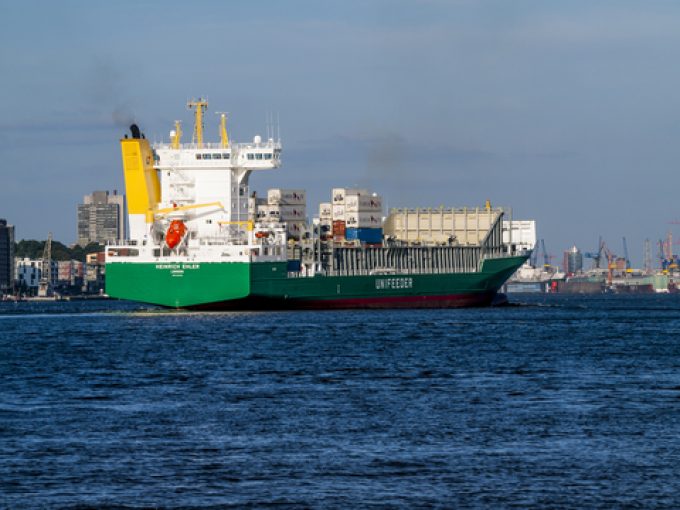DFDS celebrates Ekol buy, and says shift to electric trucks going 'better than expected'
They have been partners since 2018, started acquisition talks in 2022 and now DFDS has ...

An initiative by the port of Hamburg, in partnership with Unifeeder, will see feeder vessels used to transfer containers between the German port’s container hubs from next month.
The Danish feeder operator has worked with local software companies to “establish a proven framework for the integration into the port community systems of digital processes and customs modules for inter-berth transfers”.
And the port’s marketing division added: “The projected benefits include providing relief to port infrastructure by reducing the number of truck journeys between terminals, shorter waiting times at the terminals and a related decrease in CO2 emissions.”
It said container transfers between terminals happened on a huge scale every day and that ship-based transfers could take “several thousand” inter-terminal shunts off the road each year.
Unifeeder said it operated up to 85 terminal calls a week in Hamburg and “could offer sufficient resources to transport additional containers”.
According to Florian Pein, Unifeeder’s area director for west and central Europe, the ambitious objective of the scheme is to migrate half of Hamburg’s intra-terminal moves from truck shunts to feeder transfers.
“This includes container transfers by feeder ship between the HHLA terminals CTA, CTT and CTB, as well as Eurogate and, in the near future, the Sud-West Terminal,” added Mr Pein.
With congestion easing at North Europe’s container hubs, feeder ships are able to resume multi-terminal calls which, only a few months ago, would not have been possible.
And if the initiative is a success in Hamburg, it could prompt interest from the top two container ports of Rotterdam and Antwerp-Bruges, where inter-terminal shunting is also a massive operation.
Meanwhile, feeder operators will be relieved that charter rates for their fleets are finally falling back to sustainable levels. And feeder vessel owners are no longer insisting on minimum time-charter periods of one or two years, and flexible three-month charters with extension options are back on the table.
The feeder charter market saw massive declines in daily hire rates last month, from about $50,000 a day at the start of September (for a typical 1,800 teu ship), to approximately $20,000 at the end of the month.
For example, Hapag-Lloyd took charge of the two-year-old 1,809 teu handy feeder Green Wave on 30 September at $21,500 a day for a three-month charter – just a few weeks earlier it would have easily achieved $40,000 a day.
With the demand downturn resulting in capacity being off-loaded by ocean carriers, it follows that commercial feeder operators will be able to resume their daily scanning of brokers’ open tonnage lists to fit their capacity needs, and they no longer fear being outbid by their liner customers for the same ship.
Nevertheless, although there is a welcome reduction in charter hire costs and idle time at ports, feeder operators will need to prepare for a squeeze on rates from ocean carrier clients that will be instructing procurement teams to make savings on operating costs to mitigate the impact of tumbling freight rates.
Comment on this article